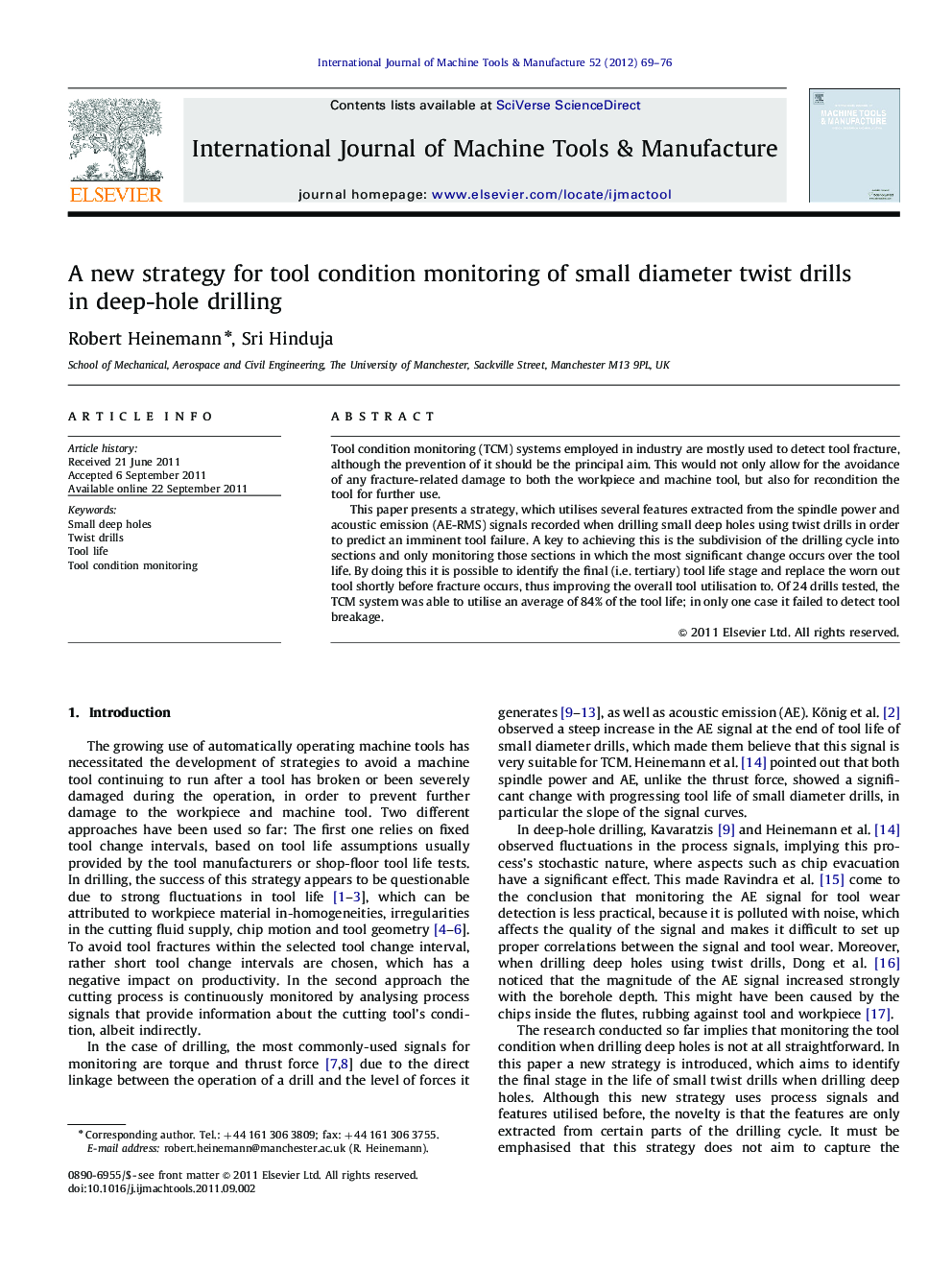| Article ID | Journal | Published Year | Pages | File Type |
|---|---|---|---|---|
| 780865 | International Journal of Machine Tools and Manufacture | 2012 | 8 Pages |
Tool condition monitoring (TCM) systems employed in industry are mostly used to detect tool fracture, although the prevention of it should be the principal aim. This would not only allow for the avoidance of any fracture-related damage to both the workpiece and machine tool, but also for recondition the tool for further use.This paper presents a strategy, which utilises several features extracted from the spindle power and acoustic emission (AE-RMS) signals recorded when drilling small deep holes using twist drills in order to predict an imminent tool failure. A key to achieving this is the subdivision of the drilling cycle into sections and only monitoring those sections in which the most significant change occurs over the tool life. By doing this it is possible to identify the final (i.e. tertiary) tool life stage and replace the worn out tool shortly before fracture occurs, thus improving the overall tool utilisation to. Of 24 drills tested, the TCM system was able to utilise an average of 84% of the tool life; in only one case it failed to detect tool breakage.
► Novel tool condition monitoring strategy capable of identifying final tool life stage. ► Tool utilisation of on average 85% with only one tool failure (out of 26 tools). ► Signals used can be acquired without costly equipment. ► Short processing time and safety cushion allows system to be operated on-line.
